Discover the most popular town in each Spanish province
The Covid-19 pandemic and restrictions on mobility throughout 2020 have influenced a notable increase in domestic tourism within Spain. With limitations on international travel, those residing in Spain made the most of the opportunity. Whilst some chose to rediscover their cities of habitual residence, many others sought small paradises away from the hustle and bustle.
And although the global health situation is expected to improve significantly in the coming months, thanks to the vaccination campaign, everything seems to indicate that domestic tourism will continue to be a trend throughout 2021.
With this in mind, Musement has conducted a study and compiled a list of the most popular towns in each Spanish province. To carry out the study*, all municipalities with less than 20,000 inhabitants in Spain were taken into consideration. Google search data** for each municipality meeting this criterion was then analysed to determine the most popular and sought-after location.
Take a look at the map below to find out the most popular town in each Spanish province:
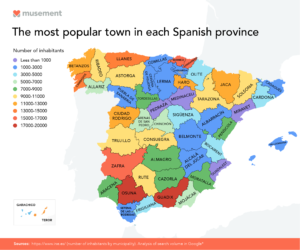
Andalucia
- Osuna (Seville): this beautiful town has a very rich artistic heritage with many worthy sights. The Monasterio de la Encarnación, the Collegiate Church and the archaeological site of Coto de las Canteras are just a small sample of its many charms.
- Frigiliana (Málaga): located in the Natural Park of the Sierras de Almijara, Tejeda and Alhama, walking through the narrow and steep streets of its historic centre is like travelling back in time. Go to the viewpoint of Callejón del Peñón to enjoy a panoramic view of the entire town.
- Setenil de las Bodegas (Cádiz): in the province of Cádiz, this town has a distinctive setting along a narrow river gorge. It is famous for the peculiar location of its houses, many of which were built into rock and natural caves.
- Guadix (Granada): is a city of great historical interest and has more than 2000 inhabited cave houses. As Jean Sermet, a well-known French geographer, once said: “Guadix is a city that should not be described; it must be seen”.
- Rute (Córdoba): one of the main attractions of Rute is the many gastronomic museums. The town is famous for its production of different forms of aniseed, nougat and chocolate. The olive industry is also key to this area.
- Mojácar (Almería): a few kilometres from the coast of Almería, you will find this white washed town full of places of interest, such as the Plaza del Parterre, the Church of Santa María or the Puerta de la Ciudad.
- Cazorla (Jaén): from the olive groves to the mountains that lie behind them, Cazorla is the perfect destination for those who want to enjoy nature and culture at the same time. Whilst you are there, take the opportunity to visit the Castillo de la Yedra!
- Aracena (Huelva): located in the Sierra de Aracena and Picos de Aroche Natural Park, one of the most popular places in this town is the Gruta de las Maravillas. Known as Groto of the Marvels in English, it is one of the most spectacular caves systems in Spain.
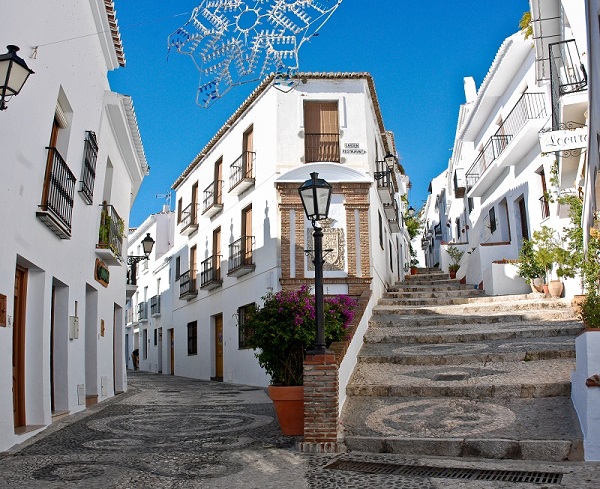
Aragon
- Tarazona (Zaragoza): amongst the great cultural offering of Tarazona, considered one of the most monumental cities in Aragon, the Tarazona Cathedral stands out. Built in French Gothic style, it also features Mudejar and Renaissance elements.
- Jaca (Huesca): in addition to being a popular destination for winter sports, Jaca has an important medieval legacy. Good proof of this is its citadel, a 16th century fortress, which is also home to a colony of rock sparrows.
- Albarracín (Teruel): this small medieval town of just over 1000 inhabitants is one of the most picturesque in Spain. Located in the Sierra de Albarracín, the town is almost entirely surrounded by the Guadalaviar River. It has numerous places of interest, such as the Church of Santa María and the Episcopal Palace.
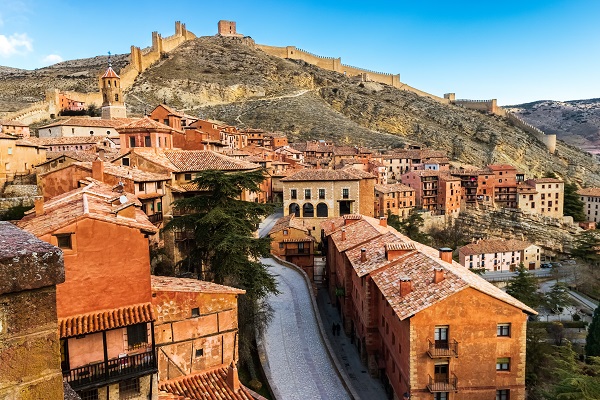
Asturias
- Llanes: the historic centre of this fishing village, declared a Historic-Artistic Site, is one of the best preserved in Asturias. Known for its emblematic mansions, the area also boasts beautiful beaches, stunning hiking routes and delicious seafood.
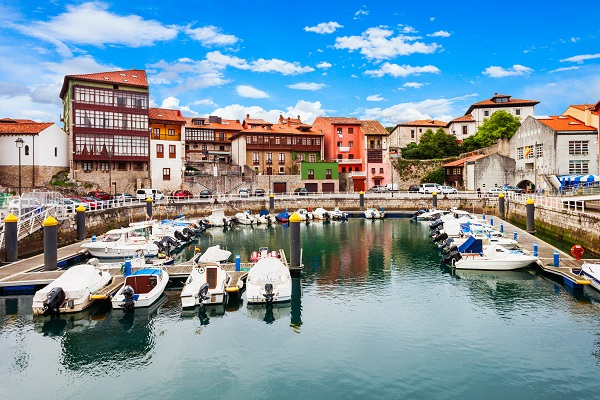
Balearic Islands
- Valldemossa: on the island of Mallorca, between the Tramuntana mountain range and the Mediterranean Sea, you will find Valldemossa. A beautiful town surrounded by vegetation, just over 400 meters above sea level. If you only visit one place, then go to the Valldemossa Charterhouse. A former monastery of the Carthusian monks, through which Chopin, among others, passed.
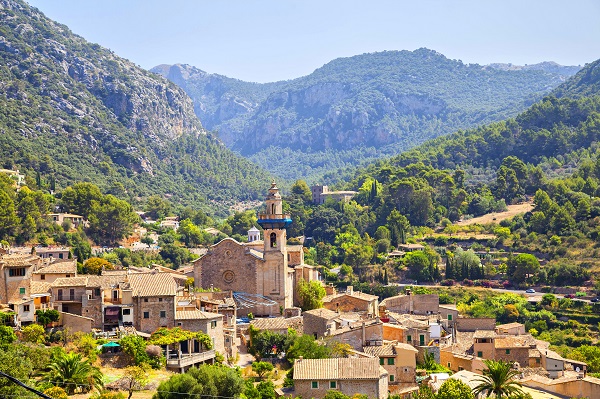
Basque Country
- Bermeo (Vizcaya): this fishing village, located in the Urdaibai Biosphere Reserve, is an essential stop in the Basque Country. Although many come to visit San Juan de Gaztelugatxe, the truth is that Bermeo has plenty of other attractions. Pay a visit to the Ercilla Tower, the Old Port, the Church of Santa Eufemia and the old town.
- Hondarribia (Guipúzcoa): at the mouth of the Bidasoa River, Hondarribia welcomes its visitors with the brightly coloured balconies of its unique houses, characteristic of Basque architecture. Encircled by medieval walls, the old town has been a settlement since the Romans and also features stunning Renaissance architecture. Walk through the picturesque cobbled streets, where places of interest follow one after another.
- Laguardia (Álava): in addition to the excellent preservation of the medieval layout of the town and historic sites such as the church of Santa María de los Reyes or the Church of San Juan, the capital of Rioja Alavesa conquers hearts and palates thanks to its excellent food and wine offering.
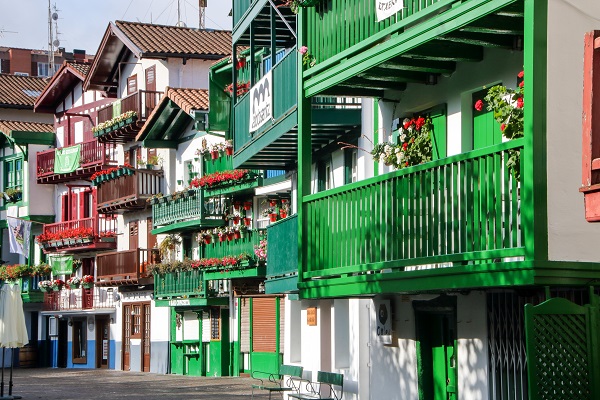
Canary Islands
- Teror (Las Palmas): in this beautiful town on the island of Gran Canaria is the Basílica Nuestra Señora del Pino, patron saint of the Diocese of the Canary Islands. Go to the historic centre to see the characteristic balconies of Canarian architecture, especially in Plaza del Pino and Calle Real.
- Garachico (Santa Cruz de Tenerife): although the eruption of the Trevejo volcano in 1706 was a hard blow for Garachico, this Tenerife town rose from its ashes even more beautiful. Today its rich architectural heritage takes us back to the 16th and 17th centuries.
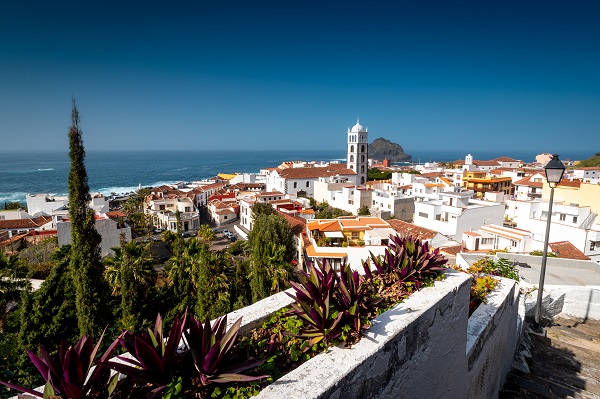
Cantabria
- Comillas: has some of the most important modernist monuments in Cantabria. The jewel in the crown is undoubtedly El Capricho, the work of the great Antonio Gaudí.
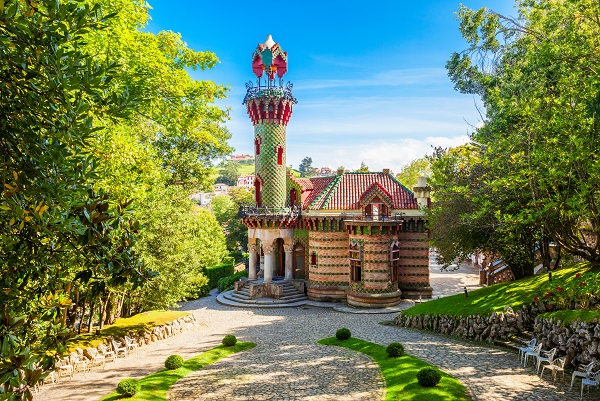
Castile and Leon
- Tordesillas (Valladolid): this town witnessed numerous historical events, such as the signing of the Treaty of Tordesillas in 1494. Its historical and architectural legacy make it one of the most popular places in Castile and Leon. Among its most outstanding monuments, it is worth mentioning the Casas del Tratado (Houses of the Treaty), the Convent of Santa Clara, the Church of Santa María and the Plaza Mayor.
- Astorga (León): the city where two of the main routes of the Camino de Santiago converge, the French route and the Vía de la Plata, which has had an important legacy since Roman times. The Cathedral and the Episcopal Palace are also two points of great cultural interest.
- Lerma (Burgos): the town of Lerma, located on a hilltop in the Arlanza region, has some of the most outstanding Herrerian-style architecture in Spain. The history of the town is intrinsically linked to the Duke of Lerma, one of the most visited places being the Ducal Palace.
- Ciudad Rodrigo (Salamanca): Ciudad Rodrigo is synonymous with historical, cultural and natural heritage. In this walled city, whose historic centre was declared a Historic-Artistic Site, it’s possible to visit numerous architectural gems, such as the Castle of Henry II or the Cathedral of Santa María.
- Puebla de Sanabria (Zamora): located in the vicinity of the Sanabria Lake Natural Park, its cobbled streets invite visitors to discover magical places such as the Castle of the Counts of Benavente or the church of Santa María del Azogue.
- Cervera de Pisuerga (Palencia): this small village in the Palentina mountains has a lot to offer. A good starting point to discover Cervera is the Plaza Mayor, whose stone arches and columns are a clear example of Castilian architecture.
- Arenas de San Pedro (Ávila): at an altitude of 510 metres and in the middle of the Sierra de Gredos, there is no shortage of places of interest. One of the most visited is the Castle of Arenas de San Pedro, declared a Historic-Artistic Monument in 1931.
- Pedraza (Segovia): declared a Historic Site in 1951, this medieval walled town is a magnet for tourists, due to its beauty and rich heritage. Don’t miss the town’s jail, the Pedraza Castle and the Well of Hontanillas!
- Medinaceli (Soria): its most emblematic monument, the Roman Arch of Medinaceli, dates back to the 1st century. A good example of the rich heritage of this town, traces of the many civilizations that inhabited it can still be seen today.
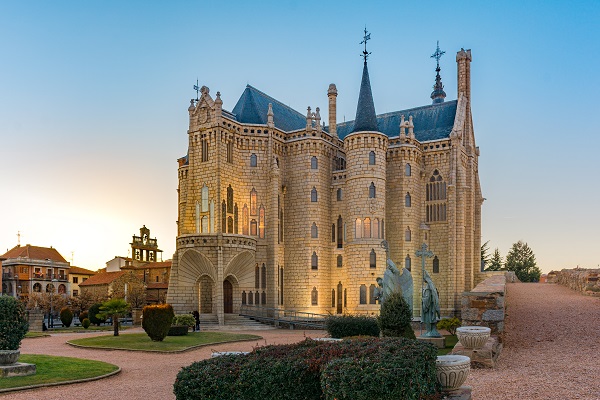
Castile La Mancha
- Consuegra (Toledo): we cannot talk about Consuegra without mentioning its 12 windmills, made famous thanks to the 17th century book “The Ingenious Gentleman Don Quixote of La Mancha”. The Castle of Consuegra is also worthy of a visit whilst there.
- Almagro (Ciudad Real): this town features the best-preserved example of the Corral de Comedias (theatrical courtyard) of the 17th century. And best of all, it is still active! For that alone, Almagro is worth visiting!
- Alcalá del Júcar (Albacete): the landmark castle and the picturesque cave-houses are just some of the monuments that await you in Alcalá del Júcar, a town declared a Historic-Artistic Site in 1982.
- Sigüenza (Guadalajara): thanks to its cultural, nature and gastronomic offer, Sigüenza is among the most popular destinations in Castile La Mancha. The city, which due to its strategic location was already populated during the Palaeolithic and Neolithic periods, has many places of interest, such as the Cathedral, the Sigüenza Castle and the Plaza Mayor.
- Belmonte (Cuenca): the castle of Belmonte, in the Gothic-Mudejar style, dominates the horizon of this beautiful town. Since its construction in 1456, the fortress has played an important role in the different stages of history.
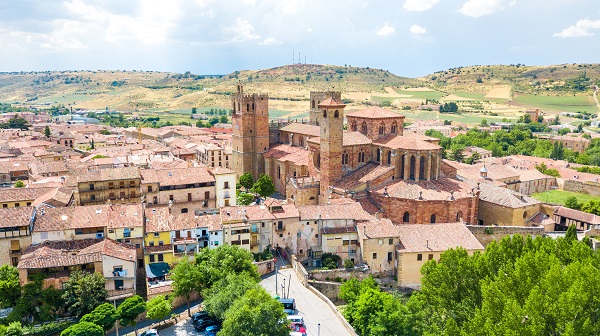
Catalonia
- Cardona (Barcelona): in addition to the picturesque historic centre, travellers who come to Cardona can visit the impenetrable castle, built in 886 by Wilfredo el Velloso. The fortress was the residence of the lords of Cardona, nicknamed the Crownless Kings, during the Middle Ages.
- Miravet (Tarragona): on the banks of the Ebro river, we find one of the most charming villages in Catalonia, Miravet. The 12th century Templar castle is one of its main attractions.
- Cadaqués (Girona): the picturesque, whitewashed houses scattered through the labyrinth streets of the old town make Cadaqués one of the most charming coastal towns in all of Spain.The town also has emblematic buildings, such as the Church of Santa Maria and the Salvador Dali House-Museum.
- Solsona (Lleida): Baroque lovers cannot miss Solsona, since the city has an important architectural legacy in this style. Among its most outstanding monuments are the Episcopal Palace/Museum and the Bridge Gateway.
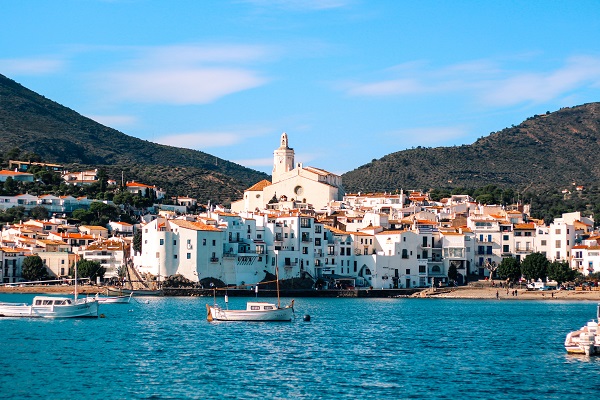
Estremadura
- Zafra (Badajoz): Zafra has always been an industrial and commercial city, mainly dedicated to agriculture. Visit Plaza Chica, where weekly markets have been held since 1380. See the “Zafra Rod” in one of the columns of the arches, the system of measurement used by the merchants of the time. Other must-see places are the Alcázar de los Duques de Feria, the Museum of Santa Clara and the Church of the Candelaria.
- Trujillo (Cáceres): the city of Trujillo, structured around the Plaza Mayor, has plenty of medieval and renaissance buildings. Among the numerous monuments, the Castle stands out, whose construction dates back to the 9th century, during the time of the Caliphate of Córdoba.
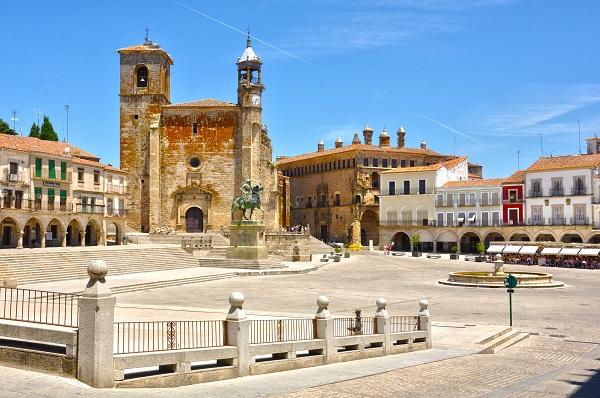
Galicia
- Betanzos (A Coruña): also known as the City of Knights, Betanzos was once the capital of the province of Galicia. Today, its rich cultural heritage is a reflection of its long history. A good example of this is its old town, declared a historic-artistic complex in 1970.
- Cambados (Pontevedra): the “Capital of Albariño” has many places of interest, such as the Pazo of Fefiñáns, the Church of San Bieito and Tower of`San Sadurniño. This beautiful fishing village is the perfect place for those who want to enjoy good food and wine.
- Ribadeo (Lugo): the emblazoned palaces of its historic centre are a symbol of the architectural wealth of this beautiful town. The world-famous Beach of the Cathedrals is very close by too.
- Allariz (Ourense): thanks to the rehabilitation of its historic centre, this town located in the heart of the province, was awarded the European Prize for Urbanism in 1994. Come and discover its many Romanesque temples and the beautiful Ponte de Vilanova.
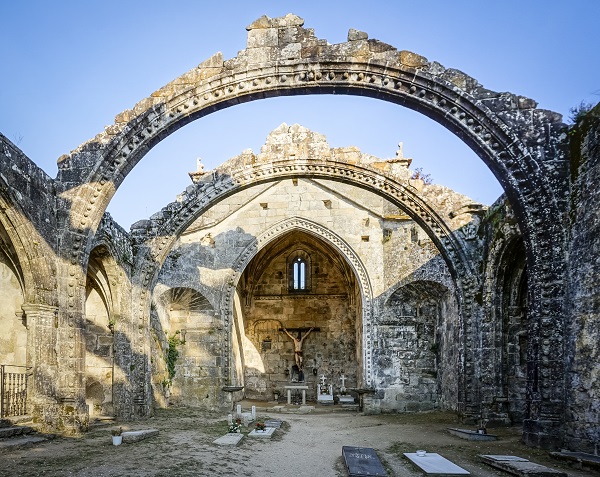
Madrid
- Chinchón: its Plaza Mayor, full of wooden balconies and facades, dating from the 15th century, is the heart of Chinchón. In addition to the charm of the popular Castilian architecture of the square, this Madrid town has many other places of interest, such as the Clock Tower or the Church of Nuestra Señora de la Asunción.
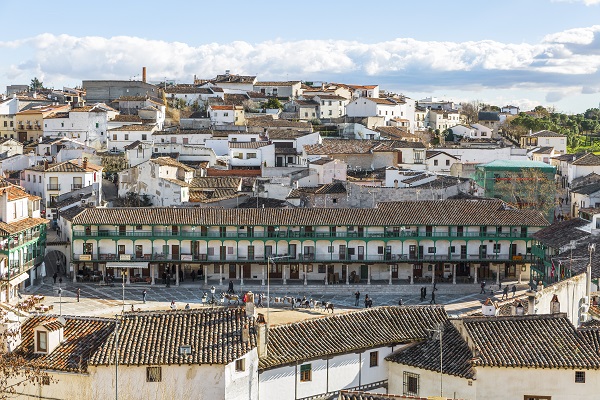
Murcia
- Moratalla: the Fortress Castle and the Church of Our Lady of the Asunción of Moratalla dominate the horizon of this beautiful mountain town. Another of its great attractions, is the ritual of the tamboradas (drum playing) during the Holy Week. Declared an Intangible Cultural Heritage of Humanity asset by UNESCO, it is a show worth seeing at least once in your life.
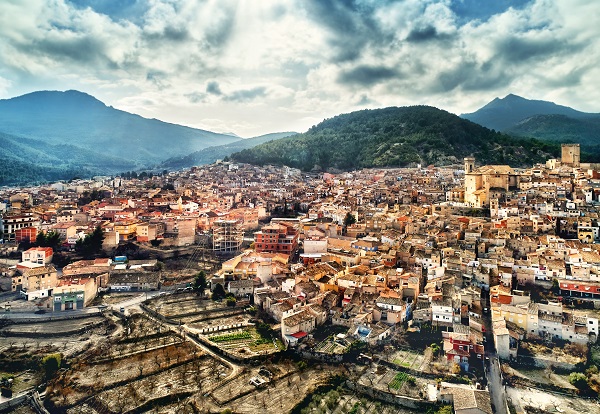
Navarra
- Olite: the city’s castle, known as the Royal Palace of Olite, is the most important medieval monument in Navarra and one of the most popular fortresses in all of Spain. It was the royal seat during the Middle Ages, and in 1925 it was declared a national monument. There are many other places of interest, such as the church of San Pedro and the church of Santa María la Real.
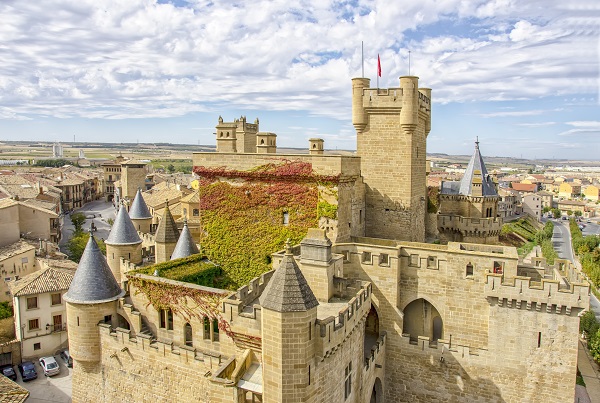
Rioja
- Haro: Haro, a favourite destination for lovers of wine tourism, also has an important architectural and cultural legacy. Its famous historic centre (“Herradura”), the church of Santo Tomás, the Basilica of Nuestra Señora de la Vega and the stately palaces, whose construction dates back to the 16th and 18th centuries, are all essential visits.
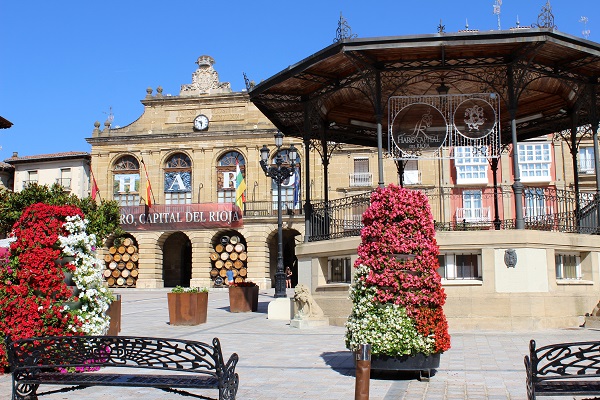
Valencia
- Bocairent (Valencia): in this Valencian town, stone is art. Go to Les Covetes dels Moros (The Moorish Caves) and see for yourself. It is believed that this set of artificial caves with more than 50 “windows”, located in the Barranc de la Fos cliff, served centuries ago as granary stores or warehouses.
- Guadalest (Alicante): Guadalest is a small town with a long history. Declared an Asset of Cultural Interest, the town has several monuments and places of interest, such as the San José Castle, the Castle of L’Alcazaiba and the Orduña House Museum.
- Peñíscola (Castellón): Peñíscola Castle is one of the main attractions of this town on the shores of the Mediterranean. Did you know that the old Templar Castle became the residence of Pope Benedict XIII?
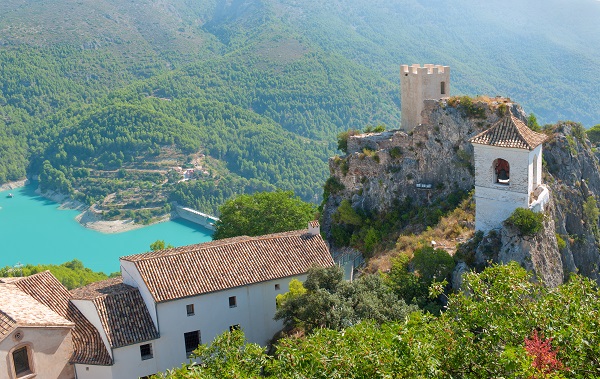
*Methodology: to carry out the study, all municipalities with less than 20,000 inhabitants in Spain were taken into consideration (source: https://www.ine.es/ – official figures from the Municipal Register – 2020 data).
To determine the most searched town in each province, data from the search volume in Google (average of monthly searches of each municipality for the term “que ver en (what to see in) [municipality]”) was used. In the event of a tie, the town whose single name had the highest search volume was chosen.
** The term “que ver en [municipality]” was used because it is one of the most popular phrases when planning a visit to a new destination, and to prevent municipalities whose names have other meanings from benefiting.
